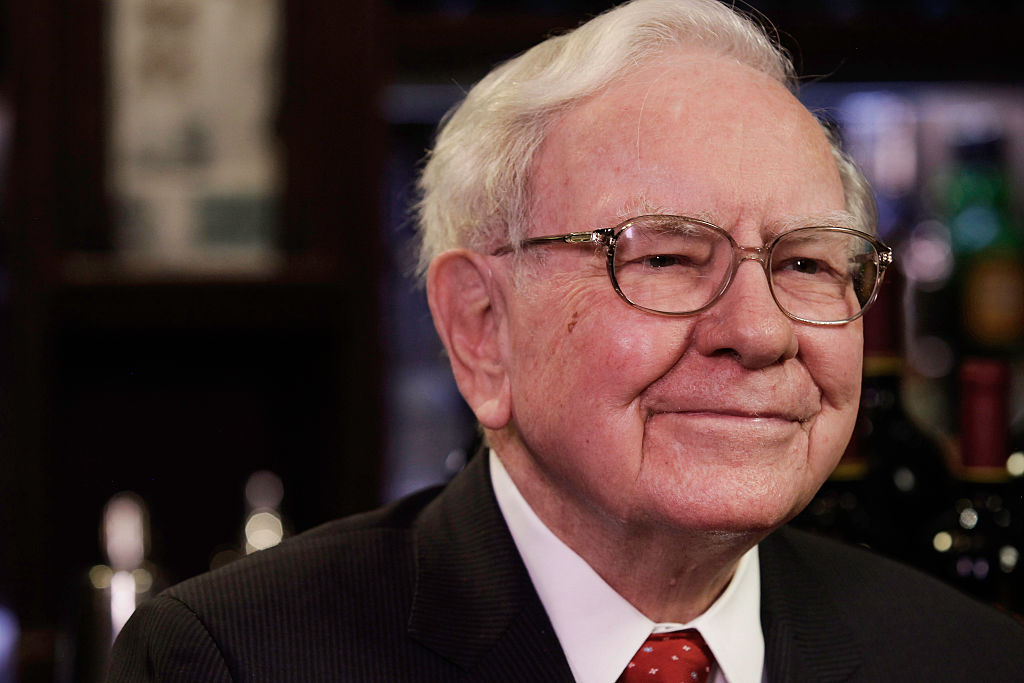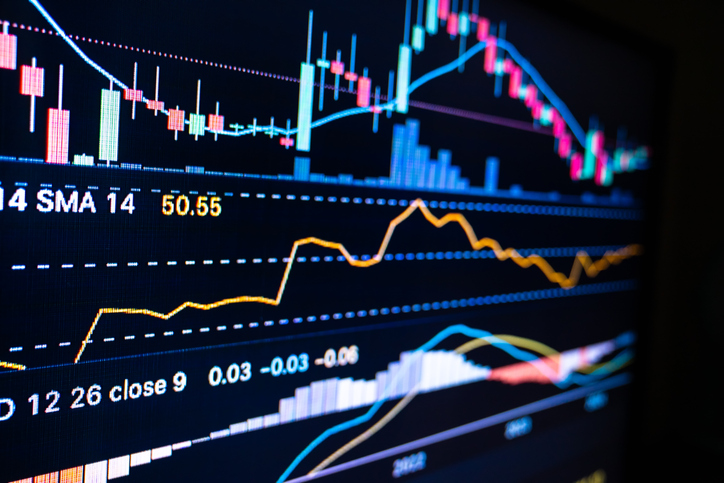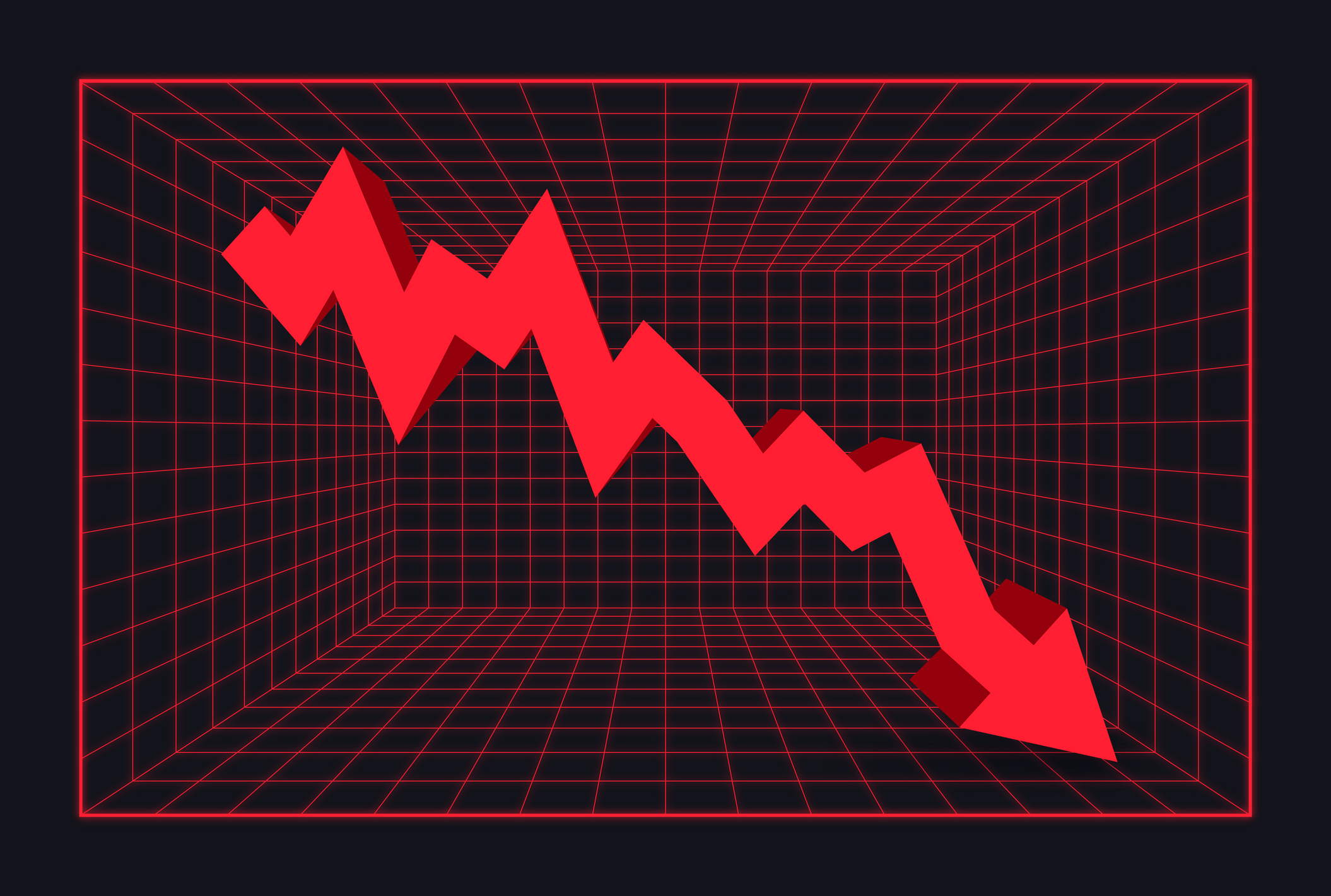10 Best ETFs to Buy for an All-Weather Portfolio
It used to be that investors asked themselves the question, “How many mutual funds should I have in my portfolio?” They still ask the same question of diversification, but more in terms of exchange-traded funds (ETFs).


It used to be that investors asked themselves the question, “How many mutual funds should I have in my portfolio?” They still ask the same question of diversification, but more in terms of exchange-traded funds (ETFs).
A portfolio of just two ETFs might be perfect for the do-it-yourself investor who has no interest in researching the ins and outs of 100 different funds. However, it might not be ideal for the person who has millions of dollars to invest and loves reading ETF fact sheets. Everyone is different.
Famed mutual fund portfolio manager Peter Lynch coined the term “diworsifcation” while discussing how companies expand into businesses they know very little about, ultimately hurting the core business in the process. But you can achieve something similar by stockpiling too many ETFs, as the typical fund has hundreds of securities, leading to overlapping positions of individual stocks.
David Swensen, the chief investment officer of Yale University’s endowment fund since 1985 and arguably one of the best investment managers in American history, has a model portfolio that includes six different asset classes: Domestic equities (30% weighting), International equities (15%), emerging markets (10%), Treasury inflation-protected securities (TIPS) (15%), U.S. Treasuries (15%) and REITs (15%).
We’ll stay close to that model with this diverse but concise list of 10 ETFs to buy, including six equity ETFs, two fixed-income ETFs and two alternative asset ETFs.
Data is as of Aug. 29, 2018. Click on ticker-symbol links in each slide for current share prices and more.
It used to be that investors asked themselves the question, “How many mutual funds should I have in my portfolio?” They still ask the same question of diversification, but more in terms of exchange-traded funds (ETFs).
A portfolio of just two ETFs might be perfect for the do-it-yourself investor who has no interest in researching the ins and outs of 100 different funds. However, it might not be ideal for the person who has millions of dollars to invest and loves reading ETF fact sheets. Everyone is different.
Famed mutual fund portfolio manager Peter Lynch coined the term “diworsifcation” while discussing how companies expand into businesses they know very little about, ultimately hurting the core business in the process. But you can achieve something similar by stockpiling too many ETFs, as the typical fund has hundreds of securities, leading to overlapping positions of individual stocks.
David Swensen, the chief investment officer of Yale University’s endowment fund since 1985 and arguably one of the best investment managers in American history, has a model portfolio that includes six different asset classes: Domestic equities (30% weighting), International equities (15%), emerging markets (10%), Treasury inflation-protected securities (TIPS) (15%), U.S. Treasuries (15%) and REITs (15%).
We’ll stay close to that model with this diverse but concise list of 10 ETFs to buy, including six equity ETFs, two fixed-income ETFs and two alternative asset ETFs.
Data is as of Aug. 29, 2018. Click on ticker-symbol links in each slide for current share prices and more.
iShares Core S&P 500 ETF
- Type: Domestic equity large cap
- Allocation: 15%
- Market value: $161 billion
- Expense ratio: 0.04%
Warren Buffett believes that most investors should own a plain vanilla S&P 500 index fund along with a small amount, say 10%, of short-term government bonds. That plan is easy for anyone to implement.
“The trick is not to pick the right company,” Buffett said earlier this year. “The trick is to essentially buy all the big companies through the S&P 500 and to do it consistently.”
The iShares Core S&P 500 ETF (IVV, $293.54) — the second-biggest S&P 500 ETF by assets under management behind only the SPDR S&P 500 ETF (SPY), the biggest U.S.-listed ETF — gets the nod solely because it’s cheaper by 5 basis points at 0.04% annually.
Sure, the SPY has smaller bid-ask spreads than IVV, which is nice for trading. But someone who simply sits in all 10 of these ETFs likely won’t be doing much trading, so those spreads are immaterial to the task of building a diversified portfolio.
This Kiplinger ETF 20 pick simply tracks the S&P 500, which means it holds 500 blue-chip companies including the likes of Apple (AAPL), Alphabet (GOOGL) and Exxon Mobil (XOM).
Invesco Russell MidCap Equal Weight ETF
- Type: Domestic equity mid-cap
- Allocation: 7.5%
- Market value: $25.8 million
- Expense ratio: 0.25%*
The Invesco Russell MidCap Equal Weight ETF (EQWM, $51.64) isn’t a very popular fund, with less than $26 million in assets under management. Nonetheless, this equal-weight fund could turn out to be the surprise winner of this ETF buy list over the long haul.
With EQWM, you enjoy the advantages of mid-cap stocks – they’re the largest segment of the U.S. stock universe, they deliver higher risk-adjusted returns than either small- or large-cap stocks, and they represent growing but financially stable businesses. You also add an equal-weighting methodology, where all the stocks represented have an equal ability to contribute to the fund’s performance. Thus, a small allocation should provide the extra juice needed to grow your investments by more than the overall markets.
EQWN’s top 10 holdings include Church & Dwight (CHD, $56.33) – the company behind Arm & Hammer, OxiClean and Trojan brands, and one of the most consistent performers among all U.S. stocks – Concho Resources (CXO) and Sprouts Farmers Market (SFM).
*Includes a 0.43% fee waiver through at least Aug. 31, 2018
Schwab U.S. Small-Cap ETF
- Type: Domestic equity small-cap
- Allocation: 7.5%
- Market value: $8.8 billion
- Expense ratio: 0.05%
Buying a low-cost ETF like the Schwab U.S. Small-Cap ETF (SCHA, $78.18) is an inexpensive way to capture the small-cap portion of the Dow Jones U.S. Total Stock Market Index, which tracks the performance of the entire U.S. stock market.
The small-cap portion gathers 1,774 stocks – the 751st largest by market cap through the 2,500th – giving investors a diversified selection of companies. The top three sectors by weight are financials at 17.7%, information technology (16.9%), and healthcare at 14.3%.
Not every holding is a true small-cap stock by definition: The weighted average market cap if $3.4 billion, whereas small caps typically are defined as being between $300 million and $2 billion. So SCHA really is giving what some would call a “smid-cap” fund.
Like EQWM, SCHA is intended to give your portfolio a little pop without overexposing it to riskier and more volatile stocks.
Vanguard FTSE Developed Markets ETF
- Type: International equity large-cap
- Allocation: 10%
- Market value: $71.2 billion
- Expense ratio: 0.07%
Every properly constructed ETF portfolio ought to have some equity holdings outside the U.S. That’s to avoid home-country bias. JPMorgan Asset Management suggests U.S. investors have 75% of their investments in U.S.-based assets despite the fact the U.S. accounts for a little more than 35% of the world’s stock markets — a condition most of the world’s investors fall victim to from time to time, doing a big disservice to their portfolios.
Vanguard has a reputation for doing things on the cheap. For 7 pennies on the dollar, you can own Vanguard FTSE Developed Markets ETF (VEA, $43.78), which gives you exposure to almost 4,000 stocks from around the world, all outside the U.S. By doing this you are not only diversifying your overall portfolio but you’re also reducing both geographic and company risk.
VEA’s holdings are concentrated in developed markets, such as Japan, Canada and western European countries. It’s also heavily large-cap in nature, featuring well-known blue chips such as Royal Dutch Shell (RDS.B), Nestle (NSRGY) and Toyota (TM).
Invesco FTSE RAFI Developed Markets ex-U.S. Small-Mid ETF
- Type: International equity small- and mid-cap
- Allocation: 5%
- Market value: $226.3 million
- Expense ratio: 0.49%
Usually, 0.49% would be expensive for a passive investment, but given it’s for just 5% of the overall portfolio, it may make sense to pay it to gain exposure to the lesser-traveled world of international small- and mid-cap markets.
Everything in moderation, right?
Unlike cap-weighted ETFs, the Invesco FTSE RAFI Developed Markets ex-U.S. Small-Mid ETF (PDN, $32.97) is RAFI-weighted — RAFI stands for Research Affiliates Fundamental Indexation — which means it uses four fundamental measures of a company’s size: book value, cash flow, sales and dividends, to weight each of the 1,504 holdings.
Proponents of RAFI like this type of weighting because it tends to tilt toward companies that are more profitable and avoids those that are overpriced providing investors with a better value proposition.
That said, you’ve likely next heard of many of the stocks in PDN’s top 10 holdings, such as Norwegian oil-and-gas surveying services company TGS NOPEC Geophysical Co. or Canadian transportation company TFI International.
Vanguard FTSE Emerging Markets ETF
- Type: Emerging-markets equity large-cap
- Allocation: 10%
- Market value: $60.6 billion
- Expense ratio: 0.14%
The Vanguard FTSE Emerging Markets ETF (VWO, $42.90), which invests in emerging markets such as China, India and Brazil, has had a rough go of it in 2018, off a little more than 10% year-to-date. That’s significantly worse than the 8% gains of the S&P 500.
Two words explain the difference: emerging markets. These faster-growing but less stable economies have acted terribly in 2018, and some experts suggest American stocks will pummel EMs for the foreseeable future.
JPMorgan wrote in July that all the bad news and trade angst emanating from overseas was baked into stock prices, and recommended that investors increase their exposure to emerging markets.
A well-constructed portfolio is like a sports team in that there’s always going to be players underperforming, overperforming and performing as expected. Having a little of everything ensures you do well in good times and bad. That’s another way of saying that emerging markets will have their day again.
iShares TIPS Bond ETF
- Type: U.S. fixed income, inflation-protected
- Allocation: 15%
- Market value: $23.9 billion
- Expense ratio: 0.2%
Treasury Inflation Protected Securities (TIPS) aren’t the most exciting investment. But when inflation starts to rear its ugly head – as is the case heading into the final months of 2018 – you want an investment like the iShares TIPS Bond ETF (TIP, $112.12) that provides inflation protection and a guaranteed real return for a portion of your portfolio. Especially if you’re over the age of 50.
In July, core inflation was up 2.9% over the past 12 months – the largest gain in the past decade and a sign that inflation is not slowing. While the economy remains strong, pension funds are starting to contemplate when the bubble will burst.
“The U.S. has been well supported by economic growth,” Canada Pension Plan Investment Board CEO Mark Machin recently said. “It has driven earnings growth. The fundamentals in the U.S. are still incredibly strong, and the question now is: How long can that go on?”
iShares Short Treasury Bond ETF
- Type: U.S. fixed income
- Allocation: 15%
- Market value: $15.3 billion
- Expense ratio: 0.15%
If you thought TIP wasn’t scintillating, you’d definitely have problems with the iShares Short Treasury Bond ETF (SHV, $110.44), which invests in short-term U.S. Treasuries of one year or less. Currently, it has 59.5% invested in U.S. Treasuries and the rest in cash and derivatives, yielding a miserly 1.2%, below the current rate of inflation.
So, why is SHV good for your portfolio?
If you remember the intro, we’re trying to follow the model portfolio of one of this country’s brightest investors, David Swensen. Also remember Uncle Warren’s advice that the average investor needs only two funds: an S&P 500 tracker and something for short-term bonds.
The asset allocation recommendations of these two investment gurus are meant to include assets that aren’t correlated to each other to help smooth out long-term returns. Sure, you’re not going to hit a home run with SHV, but you’ll probably not regret owning it when the markets get a little choppy.
Good defense wins championships.
Real Estate Select Sector SPDR
- Type: Alternatives (U.S. real estate)
- Allocation: 7.5%
- Market value: $2.8 billion
- Expense ratio: 0.13%
Real estate is the newest S&P 500 sector – and it’s an asset class that ought to be in any diversified portfolio, especially if you don’t actually own a home or other property.
The Real Estate Select Sector SPDR (XLRE, $33.90) seeks to track the performance of all the real estate investment trusts (REITs) in the S&P 500. Currently, there are 33 holdings in XLRE, with the top 10 accounting for 55% of the portfolio’s weighting.
The largest holding at the moment is telecom-infrastructure play American Tower (AMT) at 9.9%, followed closely by mall operator Simon Property Group (SPG) at 8.4%. With retail coming back to life, SPG could overtake American Tower in no time.
XLRE has struggled this year, gaining just 3% year-to-date. Rising interest rates have had a dampening effect on real estate investors. But a more-than-3% yield adds to the total returns … and should provide a little investor protection until real estate rotates back into investors’ favor.
IQ Merger Arbitrage ETF
- Type: Alternatives
- Allocation: 7.5%
- Market value: $611.4 million
- Expense ratio: 0.77%
The IQ Merger Arbitrage ETF (MNA, $31.56) was launched in November 2009. It tracks the performance of the IQ Merger Arbitrage Index, an index that seeks to benefit from corporate mergers by owning takeover targets, while also hedging via some short exposure.
Global mergers and acquisitions hit a 17-year high in the first quarter of 2018 providing the index with many potential opportunities. More importantly, merger arbitrage situations rarely are affected by market environments, so it all comes down to whether the buyer has done enough homework on the acquisition target to bring the deal home.
Of all the ETFs available in the alternatives category, MNA might seem like a head-scratcher, especially given its management expense ratio of 0.77%.
The key here is stable returns.
Since its launch, MNA has had two years of negative total returns (2010, 2011) and six years with positive total returns (not including 2018). The down years averaged -1.2%; the up years 4.4%. It’s not flashy, but it does make MNA an excellent place to park your money.
Profit and prosper with the best of Kiplinger's advice on investing, taxes, retirement, personal finance and much more. Delivered daily. Enter your email in the box and click Sign Me Up.

Will has written professionally for investment and finance publications in both the U.S. and Canada since 2004. A native of Toronto, Canada, his sole objective is to help people become better and more informed investors. Fascinated by how companies make money, he's a keen student of business history. Married and now living in Halifax, Nova Scotia, he's also got an interest in equity and debt crowdfunding.
-
 Dow Adds 314 Points to Thanksgiving Rally: Stock Market Today
Dow Adds 314 Points to Thanksgiving Rally: Stock Market TodayInvestors, traders and speculators enjoy the best Thanksgiving Week gains for the major stock market indexes in more than a decade.
-
 Why Prepaying Your Retirement Dreams Might Be a Financial Game Changer
Why Prepaying Your Retirement Dreams Might Be a Financial Game ChangerHe bought his retirement home more than a decade before he plans to retire. Was it the right move?
-
 Dow Adds 314 Points to Thanksgiving Rally: Stock Market Today
Dow Adds 314 Points to Thanksgiving Rally: Stock Market TodayInvestors, traders and speculators enjoy the best Thanksgiving Week gains for the major stock market indexes in more than a decade.
-
 Dow Gains 664 Points as Rate-Cut Hopes Rise: Stock Market Today
Dow Gains 664 Points as Rate-Cut Hopes Rise: Stock Market TodayMarkets are pricing in higher odds for a December rate cut, fueling a major rally in stocks ahead of the Thanksgiving holiday.
-
 Nasdaq Rises 2.7% as Musk Tweets TSLA Higher: Stock Market Today
Nasdaq Rises 2.7% as Musk Tweets TSLA Higher: Stock Market TodayMarkets follow through on Friday's reversal rally with even bigger moves on Monday.
-
 Dow Soars 493 Points in Fed-Fueled Bounce: Stock Market Today
Dow Soars 493 Points in Fed-Fueled Bounce: Stock Market TodayNew York Fed President John Williams struck a dovish tone Friday, which eased Wall Street's worries over a potential December pause.
-
 What Made Warren Buffett's Career So Remarkable
What Made Warren Buffett's Career So RemarkableWhat made the ‘Oracle of Omaha’ great, and who could be next as king or queen of investing?
-
 Dow Erases 717-Point Gain to End Lower: Stock Market Today
Dow Erases 717-Point Gain to End Lower: Stock Market TodayThe main indexes started the day with solid gains, but worries of an AI bubble weighed on stocks into the close.
-
 S&P 500 Snaps Losing Streak Ahead of Nvidia Earnings: Stock Market Today
S&P 500 Snaps Losing Streak Ahead of Nvidia Earnings: Stock Market TodayThe Dow Jones Industrial Average also closed higher for the first time in five days, while the Nasdaq Composite notched a win too.
-
 Dow Trims Its Loss to 498 Points: Stock Market Today
Dow Trims Its Loss to 498 Points: Stock Market TodayMarkets are wondering more and more about returns on the enormous amounts of capital hyperscalers are investing in AI.
